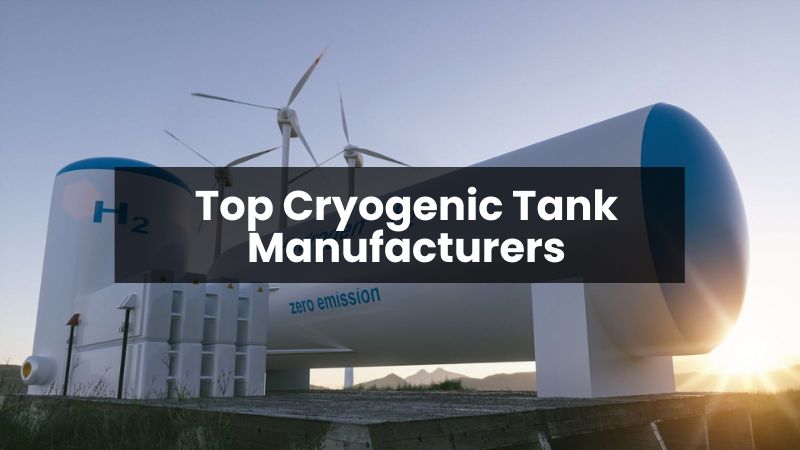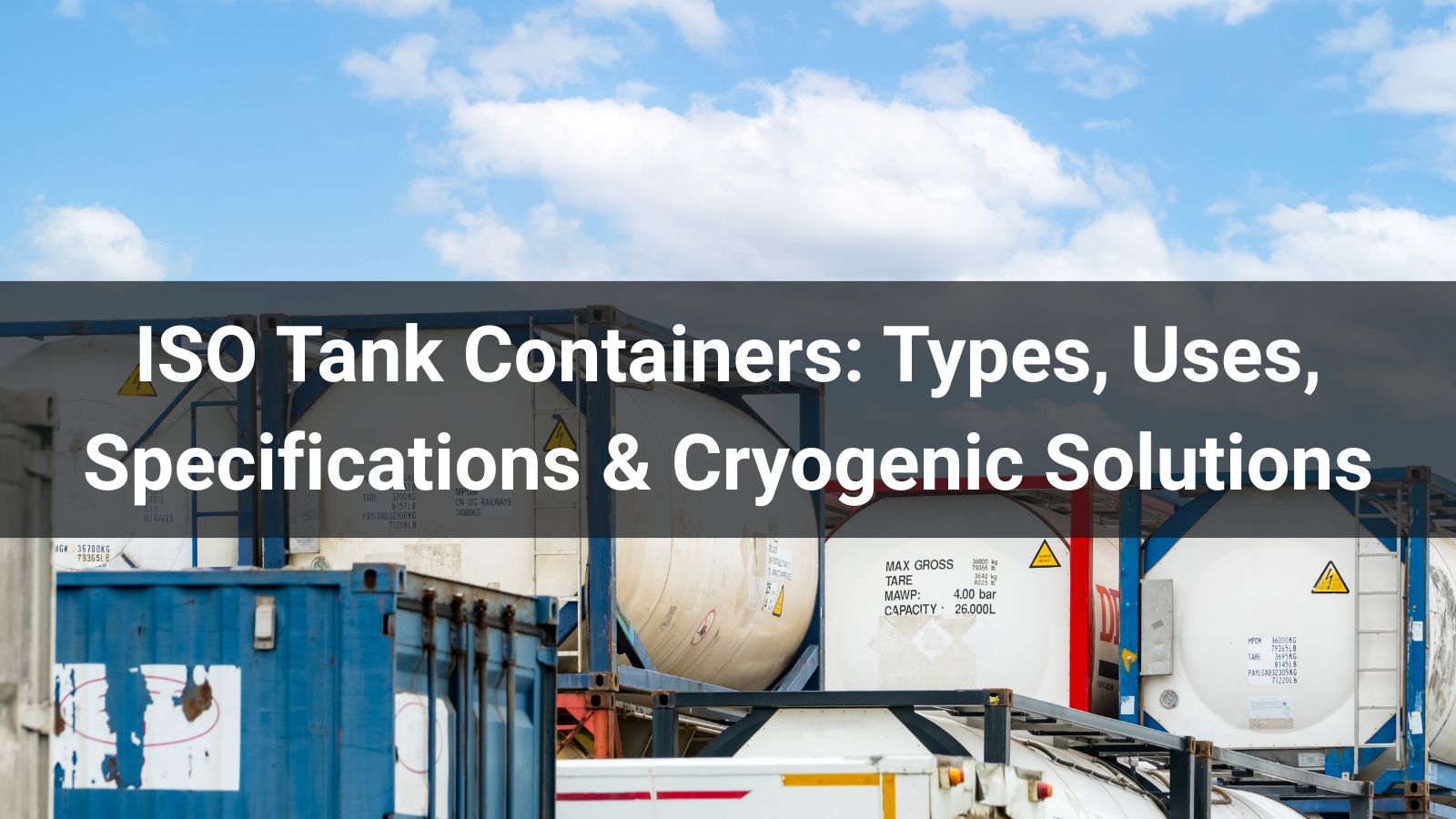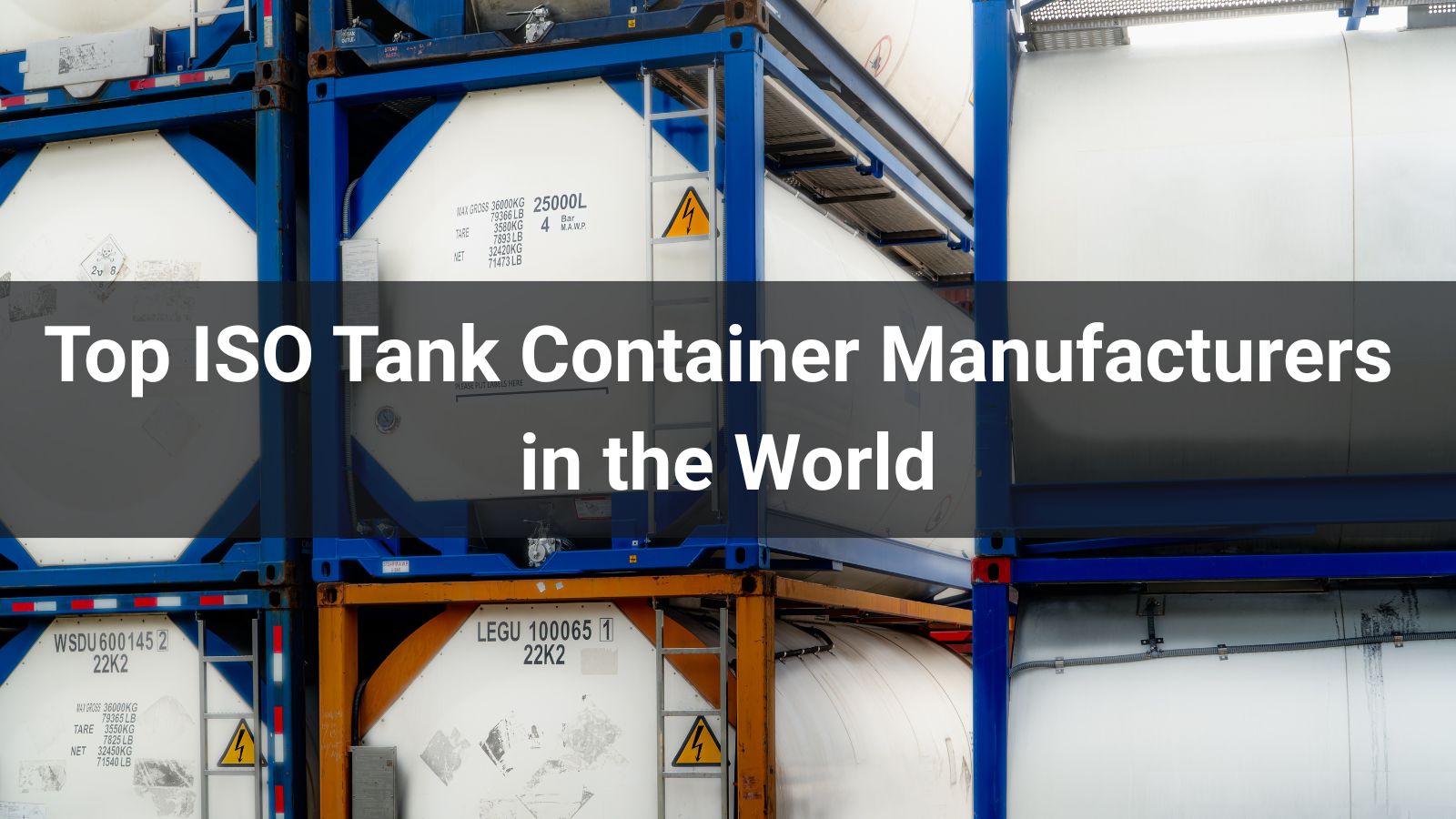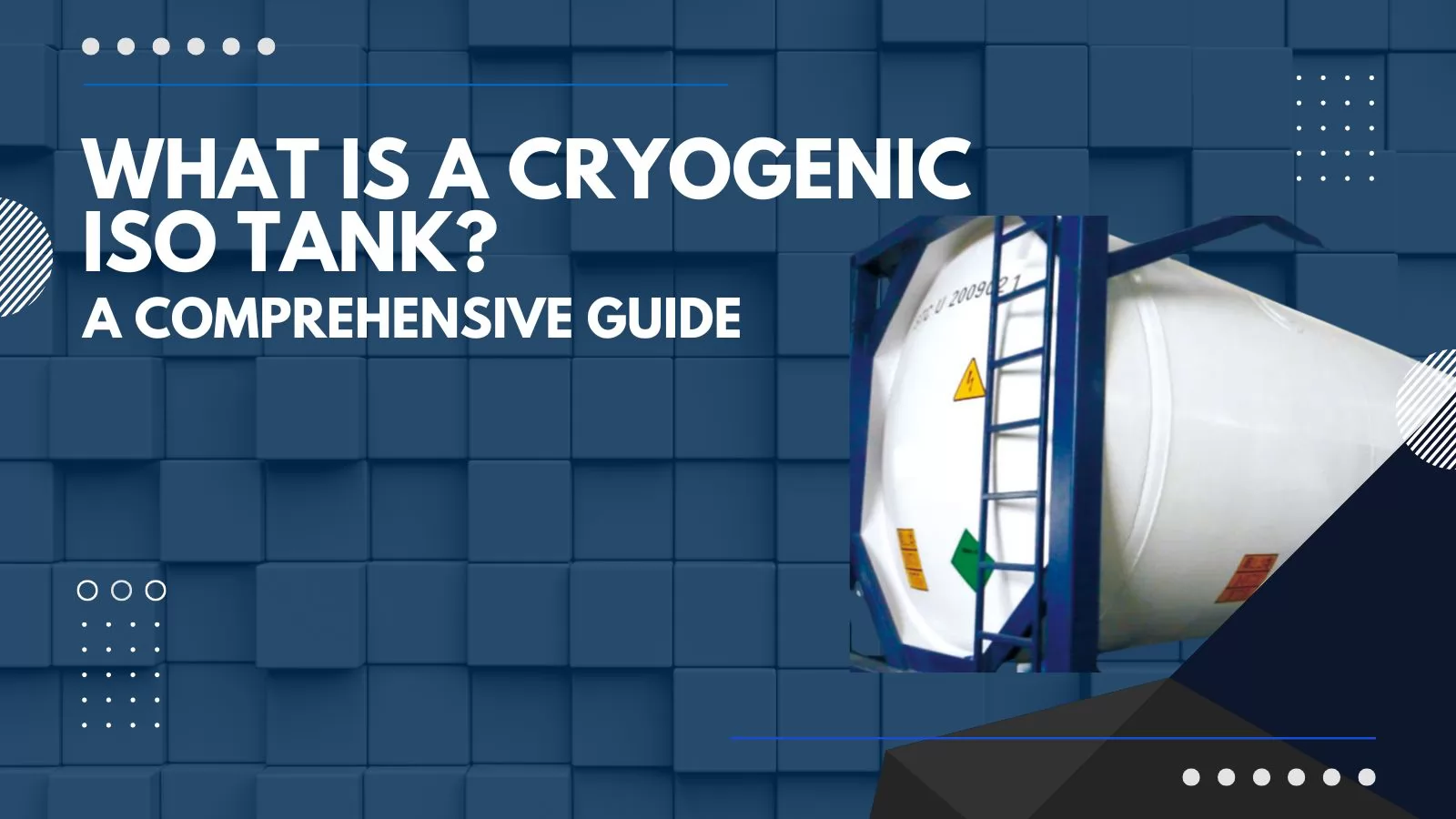
Table of Content
- Understanding Cryogenic ISO Tanks
- Design and Construction of Cryogenic ISO Tanks
- How Cryogenic ISO Tanks Work
- Applications of Cryogenic ISO Tanks
- Benefits of Cryogenic ISO Tanks
- Comparison with Traditional Tanks
- Market Trends and Future Outlook
- Choosing the Right Cryogenic ISO Tank
- Conclusion
Cryogenic ISO Tanks are revolutionizing the way liquefied gases are transported and stored, establishing themselves as vital assets in industries like energy, healthcare, and food processing. These state-of-the-art containers are precision-engineered to handle ultra-low-temperature liquids, such as Liquefied Natural Gas (LNG), liquid nitrogen, and liquid oxygen, ensuring both safety and efficiency throughout the supply chain. With their advanced insulation and robust safety systems, Cryogenic ISO Tanks are redefining global logistics, enabling seamless delivery of critical gases across vast distances. In this in-depth guide, we’ll explore the innovative design, unparalleled benefits, diverse applications, and compelling reasons why Cryogenic ISO Tanks are becoming indispensable in modern industry.
As the world shifts toward cleaner energy and sustainable practices, Cryogenic ISO Tanks are at the forefront of this transformation, supporting the rising demand for LNG and other cryogenic liquids. Their ability to maintain extreme low temperatures during transit makes them essential for delivering energy solutions to remote regions, powering healthcare advancements, and preserving food quality. Backed by cutting-edge technology, these tanks offer a reliable and versatile solution for industries navigating the complexities of global trade. From their robust construction to their compliance with international standards, Cryogenic ISO Tanks are engineered to meet the challenges of today’s dynamic markets.
Understanding Cryogenic ISO Tanks
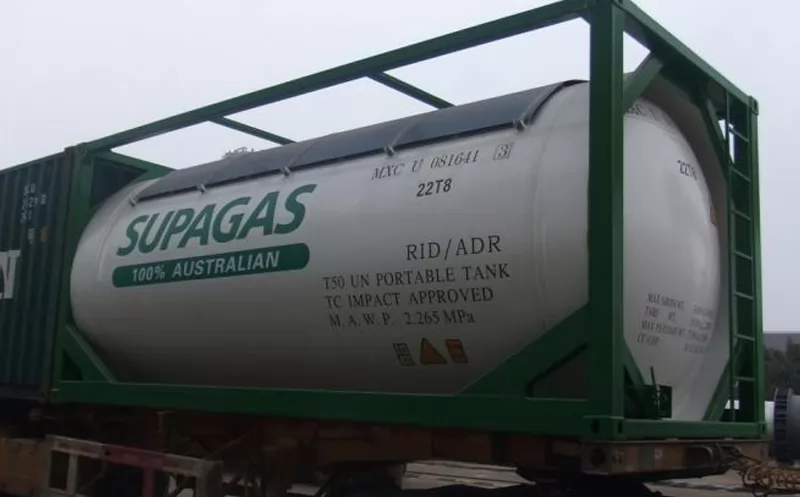
A Cryogenic ISO Tank is an intermodal container engineered to transport and store cryogenic liquids—gases cooled to temperatures below -150°C to maintain their liquid state. These tanks are built to international standards, allowing seamless transport by ship, rail, or truck. Unlike traditional storage tanks, Cryogenic ISO Tanks are designed for mobility, durability, and advanced insulation to keep liquids stable during long journeys.
According to industry insights, the demand for these tanks is growing rapidly, driven by the global shift toward cleaner energy. For instance, Shell’s LNG Outlook 2025 projects that LNG demand will increase by over 50% by 2040, highlighting the critical role of Cryogenic ISO Tanks in meeting this need.
Design and Construction of Cryogenic ISO Tanks
The design of a Cryogenic ISO Tank is what sets it apart from conventional containers. These tanks feature a double-wall structure with a vacuum-insulated space between the inner and outer walls, which minimizes heat transfer and keeps cryogenic liquids at their required low temperatures. The key components include:
- Vacuum Insulation: A vacuum layer combined with multi-layered super-insulation ensures minimal heat ingress, preserving the liquid state of gases.
- Inner Vessel: Made from stainless steel or other high-grade materials to withstand extreme cold and pressure.
- Outer Shell: Provides structural integrity and protection, often built to comply with standards like ASME or EN.
- Safety Systems: Equipped with pressure relief valves, leak detection, and real-time monitoring to ensure safe operation.
These features make Cryogenic ISO Tanks robust and adaptable for various gases, including Nitrogen (LIN), Oxygen (LOX), Argon (LAR), Carbon Dioxide (CO2), Nitrous Oxide (N2O), Ethylene, and LNG.
How Cryogenic ISO Tanks Work
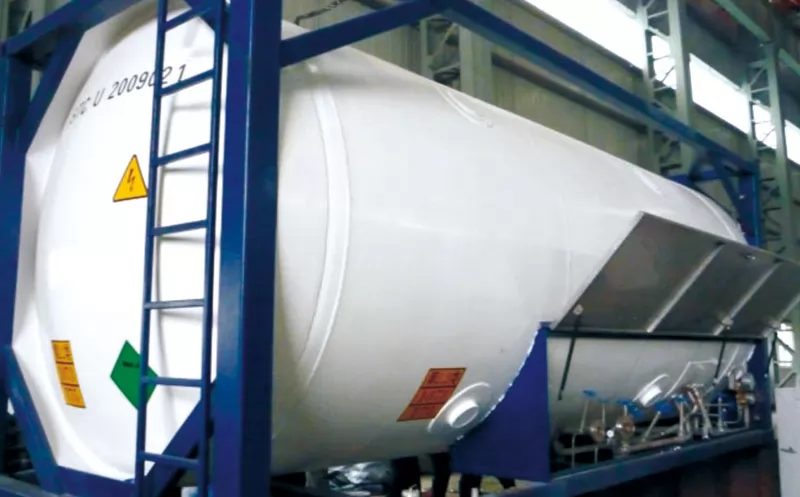
Cryogenic ISO Tanks operate by maintaining the low temperatures required to keep gases in liquid form. The vacuum insulation significantly reduces heat transfer, preventing the liquid from warming and reverting to gas. Advanced monitoring systems track pressure and temperature, while safety valves prevent over-pressurization. This ensures that the tanks can handle volatile substances safely during transportation across long distances or challenging environments.
For example, when transporting LNG, the tank maintains temperatures as low as -162°C, ensuring the gas remains liquid and stable. This is critical for industries where even slight temperature changes can lead to costly losses or safety risks.
Applications of Cryogenic ISO Tanks
Cryogenic ISO Tanks are versatile and serve multiple industries due to their ability to handle various cryogenic liquids. Their primary applications include:
- Energy Sector: Transporting LNG for power generation, ship bunkering, or virtual pipelines to remote areas.
- Healthcare: Delivering liquid oxygen and nitrogen for medical equipment, such as MRI machines or respiratory therapies.
- Food Processing: Using liquid nitrogen for flash-freezing to preserve food quality and extend shelf life.
- Industrial Applications: Supporting processes like metal fabrication, chemical production, and cooling systems.
Their intermodal design makes them ideal for global supply chains, enabling efficient delivery of cryogenic liquids to diverse locations.
Benefits of Cryogenic ISO Tanks
Compared to traditional storage solutions, Cryogenic ISO Tanks offer several advantages:
- Enhanced Safety: Advanced safety features like pressure relief valves and real-time monitoring reduce risks associated with handling cryogenic liquids.
- Flexibility: A single tank can transport multiple types of gases, reducing the need for specialized equipment.
- Cost-Effectiveness: High insulation efficiency minimizes the need for frequent refills, lowering operational costs.
- Global Compatibility: Compliance with ISO standards ensures seamless integration into international logistics networks.
These benefits make Cryogenic ISO Tanks a preferred choice for businesses seeking reliable and efficient solutions for cryogenic liquid transport.
Comparison with Traditional Tanks
Traditional tanks, such as those used for static storage, lack the mobility and insulation efficiency of Cryogenic ISO Tanks. While traditional tanks may be suitable for on-site storage, they are not designed for intermodal transport. Cryogenic ISO Tanks, on the other hand, offer:
- Superior insulation to maintain low temperatures during transit.
- Robust safety protocols, including emergency shut-off systems.
- Versatility to handle multiple gases, reducing operational complexity.
This makes them a more practical choice for industries requiring frequent transportation of cryogenic liquids.
Market Trends and Future Outlook
The global demand for Cryogenic ISO Tanks is on the rise, driven by the increasing adoption of LNG as a cleaner energy source. Shell’s LNG Outlook 2025 projects a significant growth in LNG demand, which will boost the need for efficient transportation solutions like Cryogenic ISO Tanks. Additionally, ongoing research is improving tank designs, focusing on better insulation materials, enhanced structural integrity, and advanced monitoring systems.
These advancements are expected to further enhance the efficiency and safety of Cryogenic ISO Tanks, making them even more integral to global supply chains. As industries like healthcare and food processing continue to rely on cryogenic liquids, the versatility of these tanks will drive their adoption.
Choosing the Right Cryogenic ISO Tank
When selecting a Cryogenic ISO Tank, businesses should consider several factors:
- Capacity: Tanks range from 20 to 40 feet, with capacities tailored to specific needs.
- Compliance: Ensure the tank meets international standards like ASME, EN, or ISO.
- Insulation Quality: Look for advanced vacuum insulation to minimize heat transfer.
- Safety Features: Prioritize tanks with robust pressure relief and monitoring systems.
Partnering with reputable suppliers, such as those offering leasing options, can provide access to high-quality tanks that meet these criteria.
Conclusion
Cryogenic ISO Tanks are a cornerstone of modern logistics, enabling the safe and efficient transport of cryogenic liquids across industries. Their advanced design, robust safety features, and versatility make them indispensable for meeting the growing demand for LNG, medical gases, and other cryogenic substances. As the global market for cleaner energy and advanced industrial processes expands, Cryogenic ISO Tanks will continue to play a critical role in shaping a sustainable future.
For businesses looking to leverage these tanks, understanding their design, benefits, and applications is key to making informed decisions. Whether you’re in energy, healthcare, or food processing, Cryogenic ISO Tanks offer a reliable solution for your cryogenic liquid transport needs.
| Feature | Description |
|---|---|
| Insulation | Double-wall vacuum with multi-layered super-insulation for temperature maintenance. |
| Safety Systems | Pressure relief valves, leak detection, real-time monitoring for safe operation. |
| Design | Modular, intermodal for ship, rail, or road transport, complying with ASME/EN standards. |
| Applications | Energy (LNG), healthcare (medical gases), food processing (flash-freezing). |
| Benefits | Safety, flexibility, cost-effectiveness compared to traditional tanks. |








.png)




.png)


